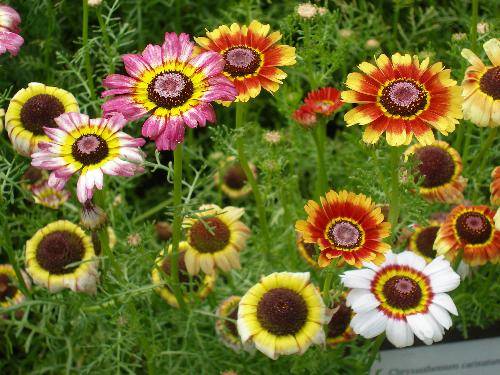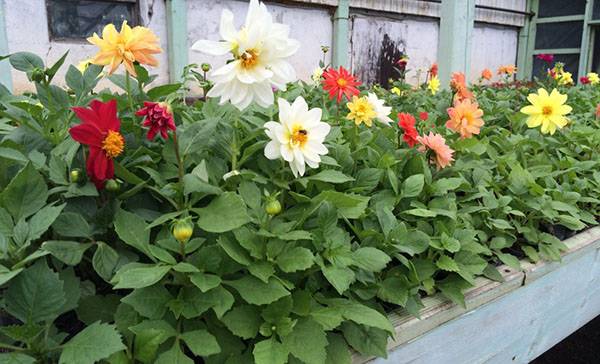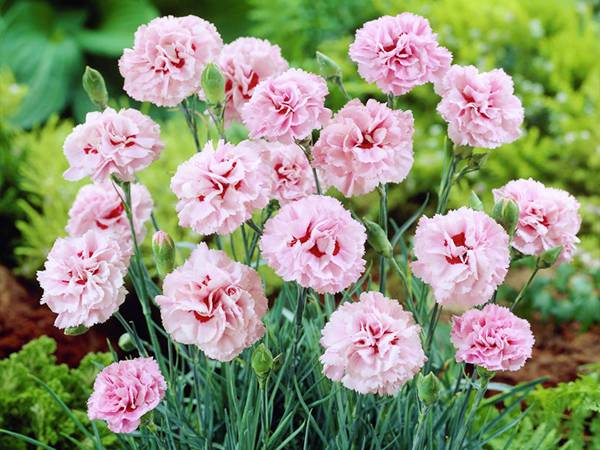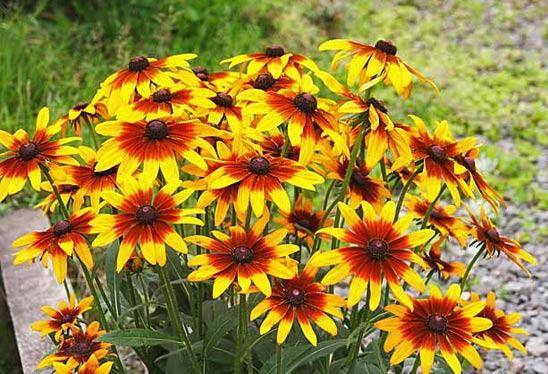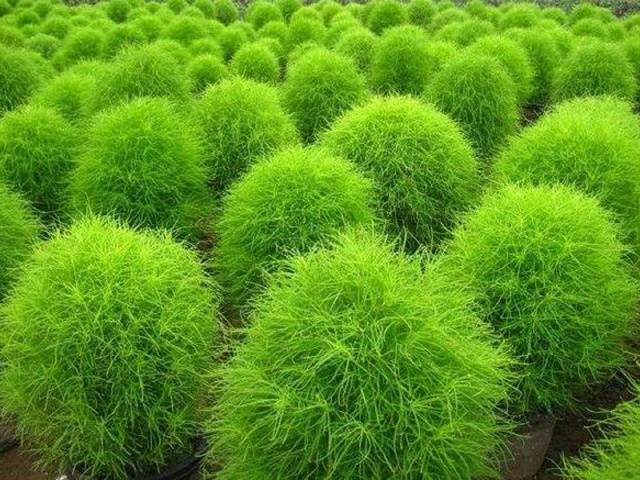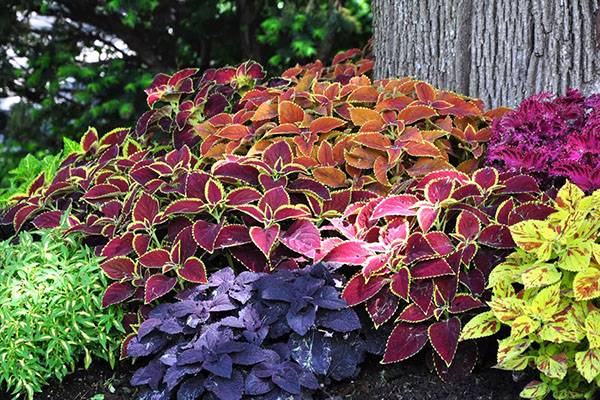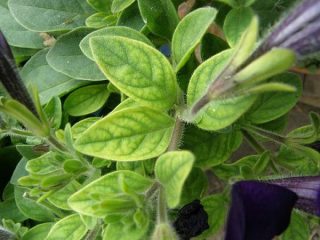“Man does not live by bread alone...”, which means that, in addition to practical benefits, and sometimes even assistance in survival, a personal plot from time immemorial has served to relax the soul and body, and delight the eye. Ornamental plants and flowers cope best with this task. Because they carry within themselves not only the purely aesthetic pleasure of frozen beauty, but also living energy that changes every moment and can bring many minutes of joy and pleasure to those who know how to discern and appreciate it.
Among decorative flowers, annuals are especially loved by gardeners. After all, many of them, thanks to their unpretentiousness and the ability to bloom non-stop (unlike most perennials) for several months in a row, are able to decorate your garden with bright splashes of all the colors of the rainbow from June until the onset of frosty weather.
True, most annuals require growing indoors in the form of seedlings in late winter and early spring.But for many, this process becomes so exciting that every year they want to grow as many different varieties of annuals as possible.
In addition, some flowers can be easily grown by direct sowing into the ground in April - May, depending on the weather conditions in your area.
Using annuals
Annuals develop and bloom, and, therefore, serve as decoration for your site for only one season. On the one hand, this seems like a drawback, because they cannot be forgotten, like some perennials, and every spring they need to be sown and replanted. But, on the other hand, what boundless scope this gives for creativity.
After all, you can experiment with planting flowers ad infinitum, every season, changing their location and coming up with new and original ideas for their placement. The most traditional places where you can place annuals are:
- Flowerbeds;
- Flower beds;
- Curbs;
- Hanging baskets and flowerpots;
- Plantings along the paths.
But besides this, annuals can be used almost anywhere, for example:
- In the garden, to decorate the beds and protect vegetables from uninvited guests from the world of insects.
- Near meshes and transparent fences to create a wall invisible to prying eyes for the summer period.
- Near walls, fences, compost heaps, garbage dumps and other places that are unsightly to the eye, flowers will mask their unsightly appearance.
- As a curtain from the sun, if you let them curl on a horizontal surface located at a certain height from the ground.
- To decorate the concrete part of the yard, annuals can be planted in various original containers: jars, pans, tanks, baths, car tires, old shoes, and even in a broken washing machine or refrigerator.
- You can decorate old stumps with annuals by cutting holes in them and also planting them with a carpet in the shadow young or with sparse tree crowns.
Classification of annuals
In the sea of diversity of species and varieties of annual flowers, it is not always easy for even an experienced gardener to navigate. And beginners usually get lost and buy and grow plants, seeds that came to hand in the store and seemed attractive in the picture. Such an approach may, at best, not bring the desired decorative effect, and in the worst case, annuals may disappoint with scanty or late flowering, or even not sprout at all and disappear. Therefore, you should first figure out which flowers are best suited for the conditions of your site and for your specific purposes.
By height
So, annuals, first of all, differ in the height of the bushes. Exist:
- Carpet or low growing flowers (up to 20-25 cm);
- Medium-sized plants (from 30 to 65 cm);
- Tall annuals (from 70-80 to 200 cm).
Among low-growing annuals, flowering all summer, the most popular and unpretentious are alyssum, viola (pansy), iberis, echium, matthiola bicorne, ever-flowering begonia, lobelia, verbena, phlox drummonda, mesembryanthemum, dimorphotheca, gatsaniya, nemesia, purslane and others.
The second group of flowers includes the vast majority of unpretentious annuals, such as: calendula, cornflower, clarkia, godetia, balsam, cosmos, coreopsis, nigella, arctotis, salvia, zinnia, cellosia, statice, eschscholzia and many others.
There are not many flowers in the third group, but they are impressive in their appearance: amaranth, mallow, Lavatera, sunflower, tobacco, malopa, foxglove.
It should be noted that many of the most popular flowers, such as, Snapdragon, annual asters, marigolds, annual dahlias, carnations, have many varieties, differing in great variety in size. From the most dwarf varieties, no more than 20-30 cm, to medium-height flowers and, finally, giants more than 80-100 cm in height.
By duration and timing of flowering
It is important to distinguish annuals by timing and duration of flowering. The vast majority of annual flowers have a long flowering period (more than three months), but some bloom for only a month to a month and a half. But they are easily renewed by sowing seeds.
The record holder for the longest flowering time is the viola (pansy), which can bloom from early spring to late autumn, and if favorable conditions are created, all year round.
At the other end of the line is malcolmia, which blooms for only a few weeks, but its seeds can be scattered literally anywhere and within 50 days pretty flowers will appear in this place.
It is necessary to realize that most of the so-called biennials (daisy, forget-me-not, lacfiol, bellflower, moonflower) also bloom only for a month or two. But when they are sown in the second half of summer, most of them bloom already at the end of April - in May, that is, during the period when none of the annuals are yet blooming.
Among the long-flowering annuals that bloom as early as June, the following species can be noted: alyssum, godetia, cornflower, goldenflower or keeled chrysanthemum, eschscholzia, echium, resin, nasturtium.
Almost all other common annuals are blooming from July until frost.
According to the length of the growing season
Since annuals are propagated mainly by seeds, it is important for gardeners to distinguish three groups of flowers according to the length of the development period from sowing the seeds to the appearance of the first flowers. Since the timing of seed sowing is determined depending on the duration of development.
Late flowers develop from 130 to 180 days and require sowing for seedlings in January-February. These are Chabot carnation, ever-flowering begonia, verbena, lobelia, petunia and others.
Medium flowers develop from 90 to 120 days. The seeds of these flowers can be sown from early March to mid-April.Among these annuals, the following flowers stand out: annual aster, gillyflower, snapdragon, ageratum, zinnia, tobacco, sweet pea, godetia, Drummond's phlox, marigolds, chrysanthemum and others.
Early flowers develop from 40 to 70 days. These annuals can be sown directly into the ground in late April or May. These include: alyssum, calendula, cosmos, clarkia, lavatera, malcolmia, matthiola bicorne, gypsophila, eschscholzia, nigella, limnanthes, nemophila and others.
By type of use
It is also very important to distinguish annuals by type of use, because this determines where exactly one or another flower can or cannot be planted.
On this basis, all unpretentious long-flowering annuals can be divided into six groups.
Beautifully flowering
This group of annuals is probably the most numerous, since many annuals are intended for the design of various flower beds and mixborders. It should be noted separately the subgroup of the most beautiful flowers, which are most often specially grown for cutting, because their flowers have the ability to last for a long time in bouquets placed in water.
Such beautifully flowering annuals include:
- Agrostemma or cockle
- Arctotis
- Aster annual
- Goldenflower or Chrysanthemum keeled
- Cosmea
- Dahlia annual
- Carnation Shabo
- Godetia
- Gaillardia
- Rudbeckia annual
- Venidium
- Zinnia
Decorative foliage
It is interesting that some plants can serve as a real decoration for a site not only due to their beautiful flowers, but also due to their painted leaves, fancy shapes or dimensions. Some of them are typical annuals:
- Decorative cabbage
- Kochia
Others by nature belong to perennials, but because of their love for warmth, they are grown in temperate gardens as annuals.
- Irezine
- Castor bean
- Coleus
- Perilla
- Cineraria or seaside ragwort
Dried flowers
This category includes annuals that can be used not only to decorate the site, but also for winter bouquets and floral arrangements.
These include:
- Acroclinum
- Helichrysum
- Statica or Kermek or Limonium
- Gypsophila
- Lunnaria
- Nigella Damascus
- Xeranthemum or dried flower
- Scabious
- Molucella
climbing plants
There are not many climbing flowers among annuals, but nevertheless the choice of plants is large enough to be used for vertical gardening in a wide variety of conditions.
These include:
- Sweet pea
- Convolvulus or morning glory
- Nasturtium
- Kobeya
- Decorative pumpkin
- Thunbergia
Carpet annuals
These low-growing flowers can form carpets in different parts of the garden. Some require dry, sunny locations with poor, well-drained soil. Many of them are able to grow even on sand or stones: alyssum, anhuza, dimorphotheca, eschscholzia, gatsania, iberis, malcolmia, limnanthes, mesembryanthemum, purslane.
Others prefer richer soils and can even grow in partial shade. These include evergreen begonia, balsam, lobelia, nemophila.
Potted flowers
This group includes beautifully flowering perennial plants, which are quite easily preserved at home during the winter. And as the weather warms up, these flowers are often planted in containers, balcony boxes or flowerpots to decorate the area during the summer months.
This group includes:
- Balsams of different types
- Begonia everblooming and root
- Coleus
- Geraniums or pelargoniums
- Calceolaria
- Schizanthus
Conclusion
The variety of annuals or flowers used for summer planting is so great that everyone is quite able to choose a plant to their taste and color that suits specific purposes and conditions. Perhaps after reading this article you will be able to avoid many mistakes that are inevitable in the absence of experience.











